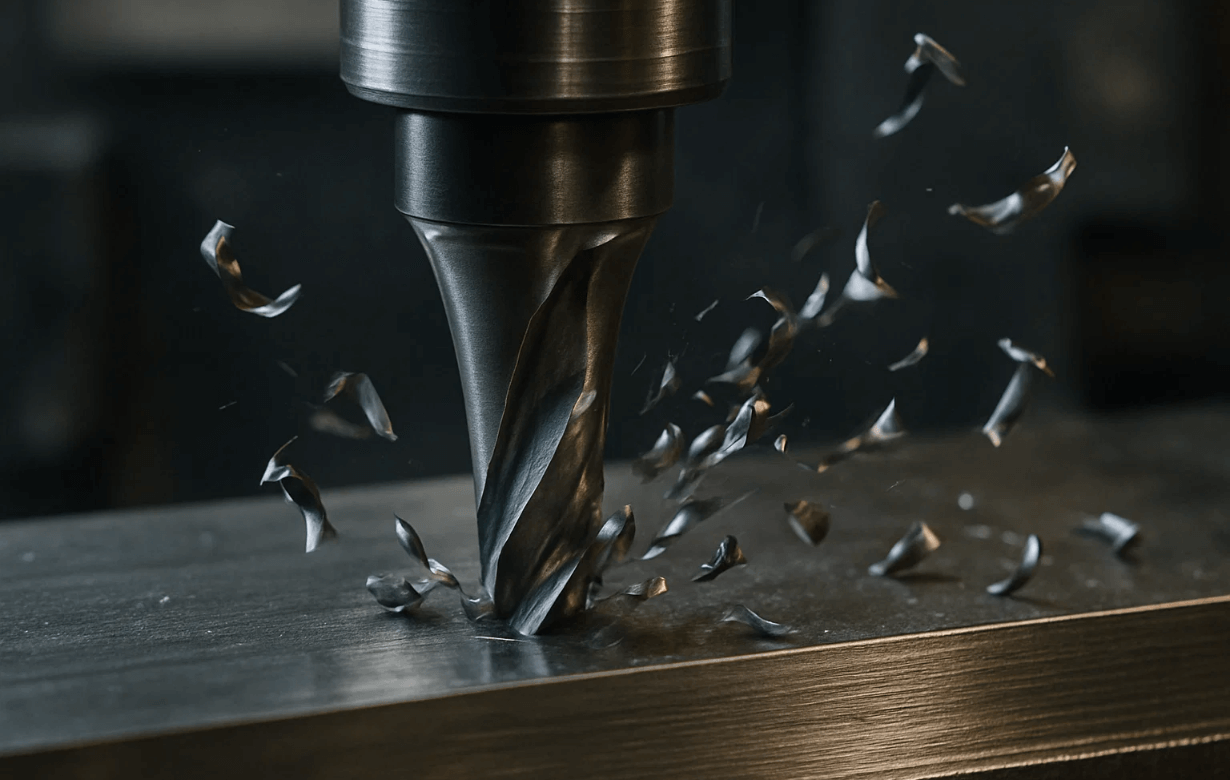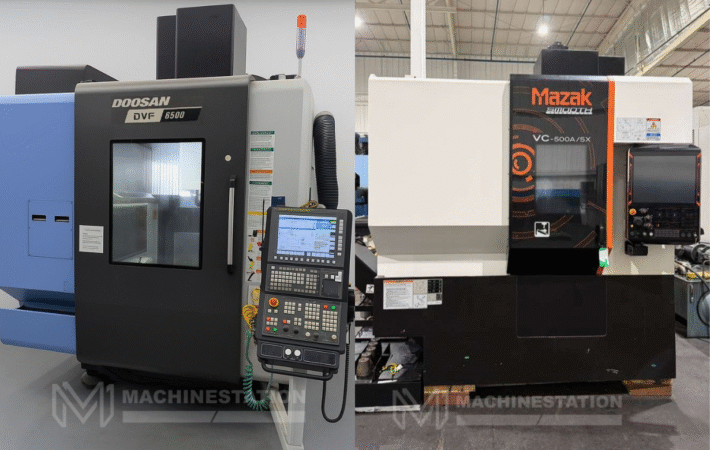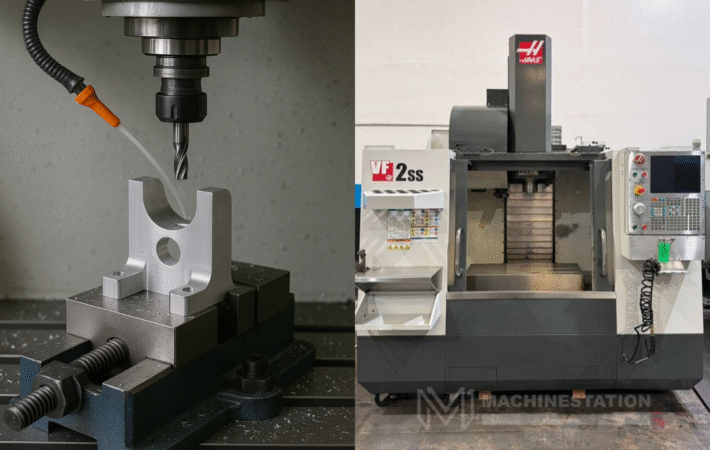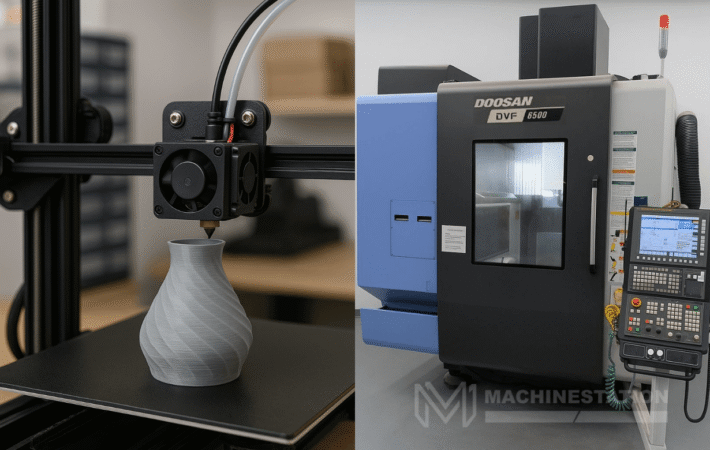Chip load is an important term to know and understand if you are in the world of machining, or trying to enter it. Chip load, which is also known as feed per tooth, is an important metric that measures the amount of material removed by a cutting edge during one single rotation or pass. But this simple thing has a lot of importance in the whole machining process so knowing about it and its importance in detail is also paramount for success in CNC machining. If you are curious about chip load or its importance, then you have landed on the best site so let’s dive deep into it.
What is Chip Load?
In simple words, chip load is the thickness of the material removed by the cutting edge of a tool during a single cut or revolution. It is the measurement of the amount of material that each tooth of the cutter engages with during every single cut or pass. Understanding and optimizing chip load is very important for extended tool life and achieving high productivity.
Mathematically, Chip load is expressed as:
Chip Load= {Feed Rate (In/Min)}/{Spindle Speed (RPM)×Number of Flutes}
Where:
- Feed rate means how fast the tool advances through the workpiece.
- Spindle speed is the pace at which the tool rotates.
- The number of flutes is the count of teeth on the tool.
The unit used to refer to chip load is generally inches per tooth (IPT) or millimeters per tooth (MPT).
Importance of Chip Load:
Now that we have discussed what is the definition of chip load and how to calculate it, let’s find out what’s the importance of chip load:
- Tool life: Having an appropriate chip load is very important for optimizing the tool life. If the chip load is too high, then the tool is forced to remove too much material with each pass which generates excessive heat leading to high wear and tear of the tool and even major tool failures at times. On the other hand, if the chip load is too low then that will result in inefficient cutting, dulling of the tool and eventually leading to complete failure of the tool.
- Surface finish and quality: Chip load is a major influential factor behind the quality of surface finish. Proper chip load ensures a smooth surface finish, too much chip load can cause rough finishes and tear out. Also, too few chip loads can leave burn marks or chatter on the workpiece.
- Machine efficiency: Chip load influences the Material Removal Rate (MRR). A higher chip load results in a faster material removal rate which boosts productivity and reduces cycle times, it is critical for high volume production environments. But, this should be balanced as per the tool capabilities and material properties helping you to avoid compromising tool life and part quality.
- Heat management: The heat generated during cutting is carried with each and every chip. Proper chip load ensures that the chips are removed efficiently and carries the heat away from the main cutting zone which protects the tool and the workpiece from any kind of thermal damage.
- Power consumption: Chip loads also affect the power consumption of the CNC machines. Higher chip loads mean higher cutting forces which definitely require high power consumption. However, this should be balanced against the probability of tool wear and damage. So, an optimal chip load energy is used efficiently without making any compromises about tool life or product quality.
- Machine and tool stability: Maintaining an optimal chip load helps to ensure the stability of the machine and the tool, while excessive chip load can increase the stress on the machine’s spindle and axis drives. While insufficient chip loads cause heavy vibration, so balance of chip load is the key to perfect machining.
Factors affecting chip load:
Now here is a list of some of the major factors that affect the chip load:
- Material properties: The properties of the material that is being machined have a high impact on the chip load. Soft materials like aluminum can tolerate higher chip loads, while harder materials like titanium require lower chip loads to prevent tool breakage.
- Tool geometry: The geometrical design of the design including its number of flutes, helix angles, and rake angles affects the chip load at a high level. Tools that have more loads distribute the loads among their different cutting edges, which further allows for higher feed rates.
- Machine capabilities: Chip load also gets affected by the power and rigidity of the CNC machine. More powerful machines are capable of handling higher chip loads, while less rigid machines may have vibrations if the chip load gets heavy.
- Feed rates and spindle speed: Both spindle speed and feed rates are inversely proportional to chip load. Increasing the feed rate while decreasing the spindle speed will increase the chip load and vice versa. Balancing these two parameters is very important for having a safe and optimal machining experience.
How to calculate the optimal chip load?
We have discussed how high or low chip loads can affect the performance of the CNC machine, and also the factors that affect chip loads. Now, here are the steps on how to calculate the optimal chip load for your machining work:
- Check manufacturer recommendations: To know the optimal chip load for your CNC machine you will have to start by consulting the handbook of your manufacturer because a lot of them provide detailed information about optimal loads for different materials and tool sizes.
- Use the formula: Put your feed rate, spindle speed, and the number of cutting edges as per the chip formula we shared.
- Fine tune based on results: Closely inspect the tool wear, chips, and surface finish, and then adjust the feed rate or spindle speed to achieve the optimal chip load for your specific setup.
Best practices to manage chip load:
Here are solutions to the problem we are discussing, these steps will help you to manage an optimal level of chip load:
- Check manufacturer data: Maintain a recommended value of chip load as per the manufacturer and then you can fine tune for your particular setup.
- Monitor tool wear: Make sure that your machine’s tool doesn’t have a lot of wear and tear and if you find something like that then replace them to maintain consistent chip load and machining quality.
- Use necessary lubricants and coolants: Reduction of friction and heat generation is paramount to facilitate efficient chip removal. Using lubricants or coolants is the best thing for this.
- Adjust parameters following your requirements: You need to be prepared to adjust the feed rates, depth of cut, and spindle speeds to maintain an optimal load during the whole machining process.
Conclusion:
Chip load is an important factor to take care of when doing operations in CNC machines. You need to make sure to achieve optimal chip load for your CNC machining setup, which will keep the machine safe and give it a long life, and that can only be done when you have a rigid CNC machine. If you want to buy a rigid CNC machine, then you should check out our collection of Used Okuma CNC Machines.






